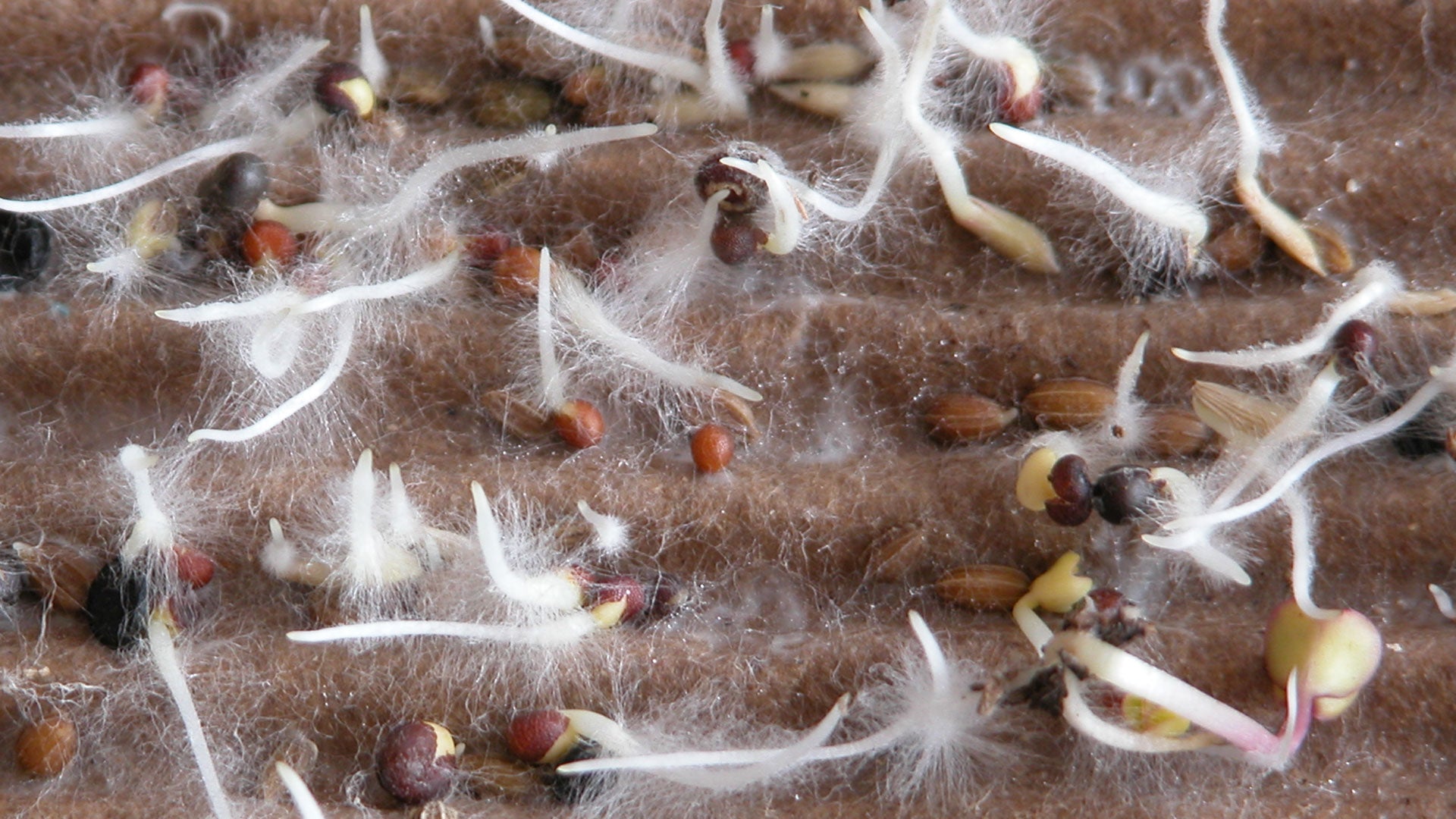
Get Associated With Mycorrhizae
Say the word “Fungus” and most people think of the familiar white or brightly colored toadstools, puffballs, or bracket fungi on rotting logs. Many picture slimy growths of putrescence, moldy bread, spots on the leaves of their favorite rose and other nuisances. But apart from the subtle white thread-like mycelium and occasional spore producing mushroom, the extremely beneficial mycorrhizal fungi remain largely invisible to most humans.
A mycorrhiza (plural mycorrhizae or mycorrhizas) is a mutualistic symbiosis between a fungus and a vascular plant. The word is derived from greek: mykós (fungus) and riza (root) and was first coined in 1885. Yet it was not until over 100 years later that the relationship became known to agriculture and eventually home gardening. Now we know that over 90% of all land plants and probably more, form mycorrhizae, and that they influence plant nutrition, community structure and nutrient cycling. In fact, nearly 500 million years ago, these fungi allowed plants to leave the ocean, and begin to colonize the earth.
Mycorrhizas were first classified as two types: ectotrophic and endotrophic, but there are now seven distinct symbioses. In each, the fungus receives sugars from the plant and in exchange the plant receives certain nutrients, water and protection against pathogens.
Endomycorrhizas, in which most of the fungal structure is contained within the root, are the most common type. They were first to evolve, and associate with a diverse array of plants including most crop plants, grasses, forbs (flowering plants) and many trees. Most do not form typical mushrooms.

Ectomycorrhizal root tip mycelia from the genus Amanita. Source: http://www.biomedcentral.com/1471-2105/6/178 via Wikimedia Commons
In Ectomycorrhizas, the association is more advanced. The fungus grows close to the root surface, forming a sheath around the root system, and a network in between root cells. From this layer, it extends outward into the surrounding soil to forage for moisture and nutrition. Many form edible or otherwise noteworthy mushrooms, and typically associate with woody shrubs or trees such. Examples of common mycorrhizal mushrooms are Amanitas, Boletes, Chanterelles, and the prized Truffles.
Mycorrhizal fungi can extend a plant’s root system up to 1000x, increasing moisture and nutrient uptake capacity. A significant role is finding and retrieving hard-to-capture nutrients such as organic nitrogen, phosphorus, and iron. Fungal enzymes also free Copper, Calcium, Magnesium, and Zinc making them available for plant use.
Not only can ectomycorrhizal fungi connect entire communities of plants enabling them to exchange information, but they can access many nutrient sources not directly available to plants (e.g. rocks, nematodes, pollen, and insects.) Without mycorrhizae, many plants are unable to obtain adequate nutrition to perform the best. A perfect example of this followed the catastrophic eruption of Mt. St. Helens in May of 1980. After the eruption, patters of succession revealed that seedlings which germinated from soils where mycorrhizae were present were much more successful. Research also indicates that certain mycorrhizal fungi can confer protection to plants from metals or acidic contaminated soils, which shows promise for their use in restoration projects.
Although ecologically influential, soil fungi are actually quite fragile – the use of fungicides, pesticides, inorganic fertilizer and many physical factors can reduce or eliminate mycorrhizae. Rototilling and double digging break up the delicate tubes known as hyphae, while soil compaction from heavy machinery and other vehicles can crush and destroy these critical networks. Practicing no-till and other permaculture techniques coupled with the use of Mycorrhizal inoculants can help restore and promote healthy populations of these beneficial fungi and other soil organisms in your garden and yard.
For more information on the role of Mycorrhizae in the garden, we offer a fantastic book entitled Teaming with Microbes: The Organic Gardener’s Guide to the Soil Food Web.
If you are interested in promoting and restoring populations of these beneficial fungi, it is easy to re-introduce mycorrhizal fungi to the soil in an effective, safe and 100% natural way. Fungi Perfecti’s MycoGrow products are designed for everyone from the home gardener/landscaper to the professional forestry manager, promoting faster growth, speeding transplant recovery and reducing the need for fertilizers and other additives. A number of different formulations are available, for all methods of plant cultivation.
